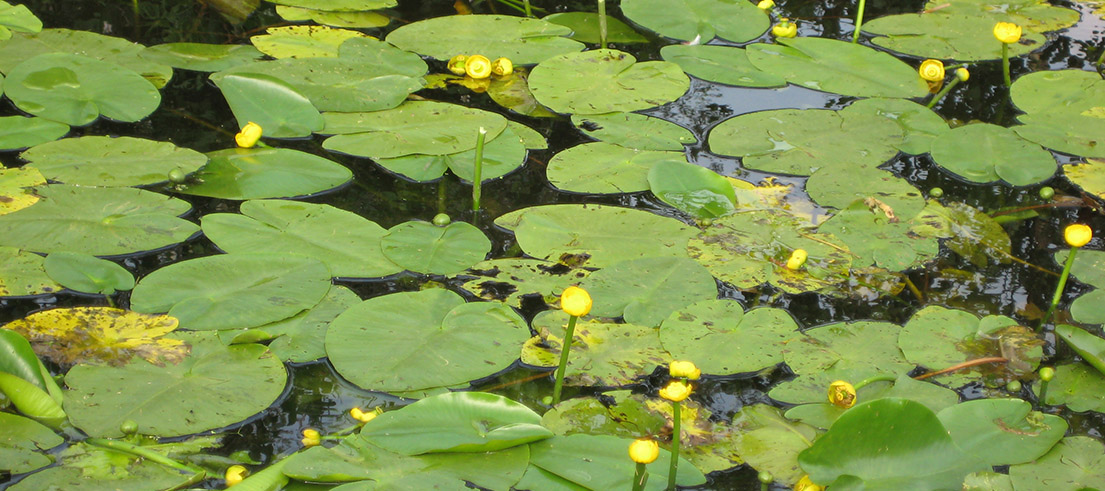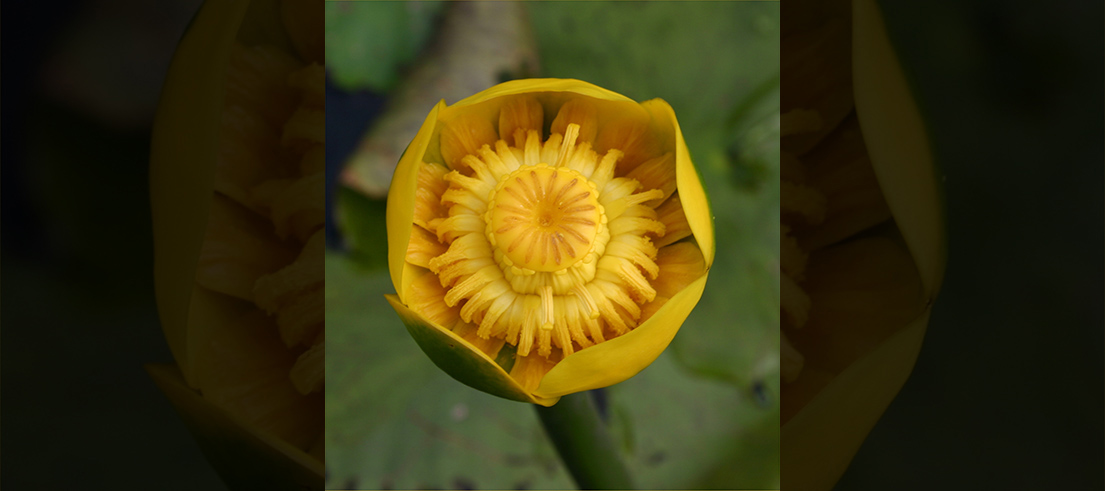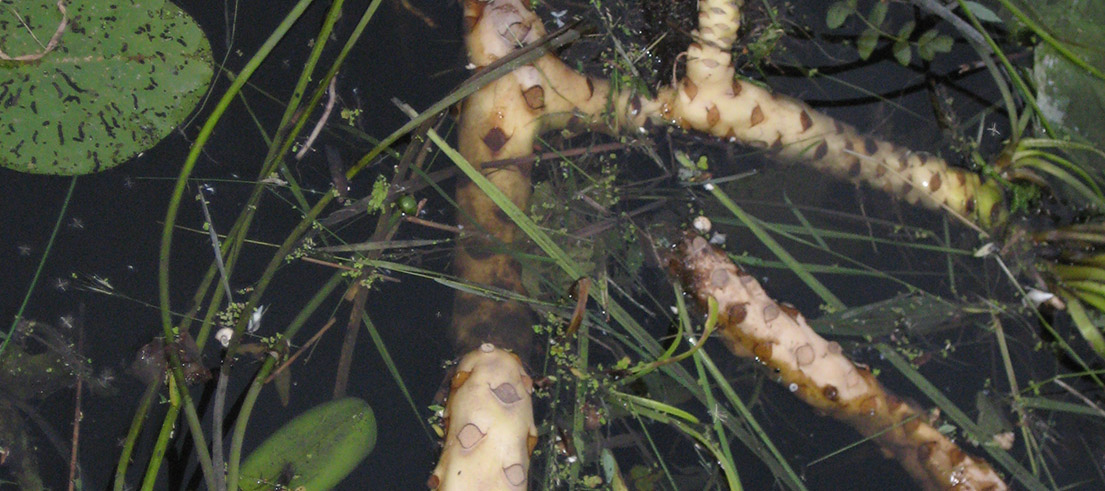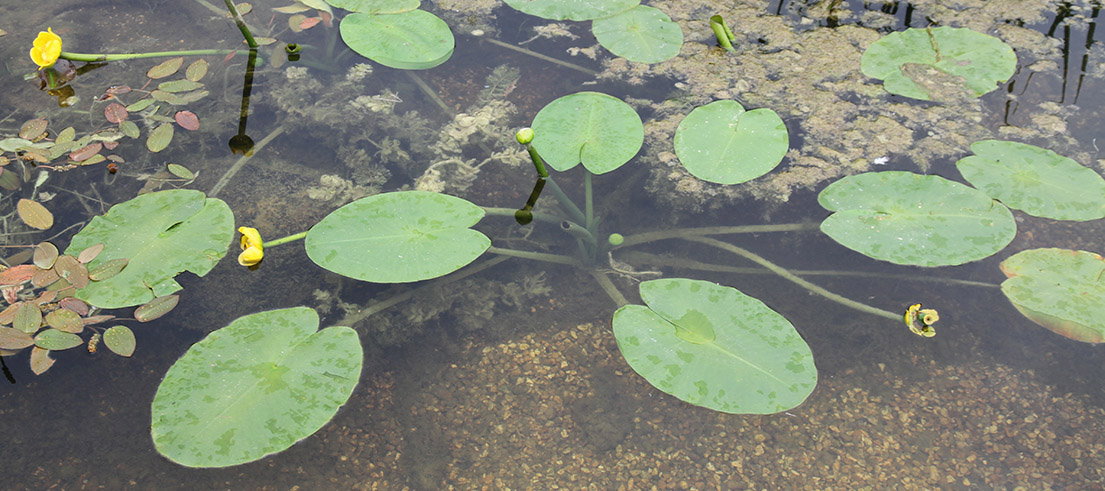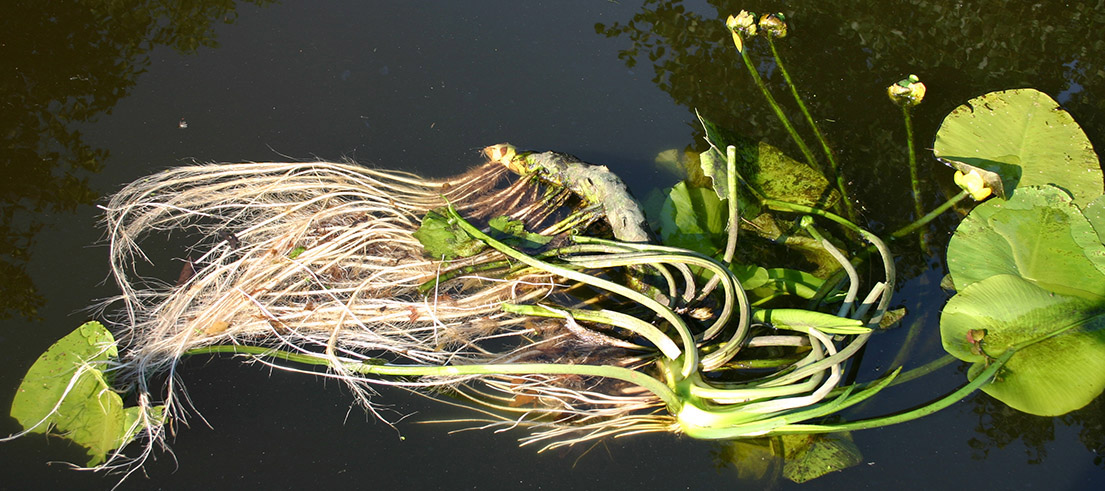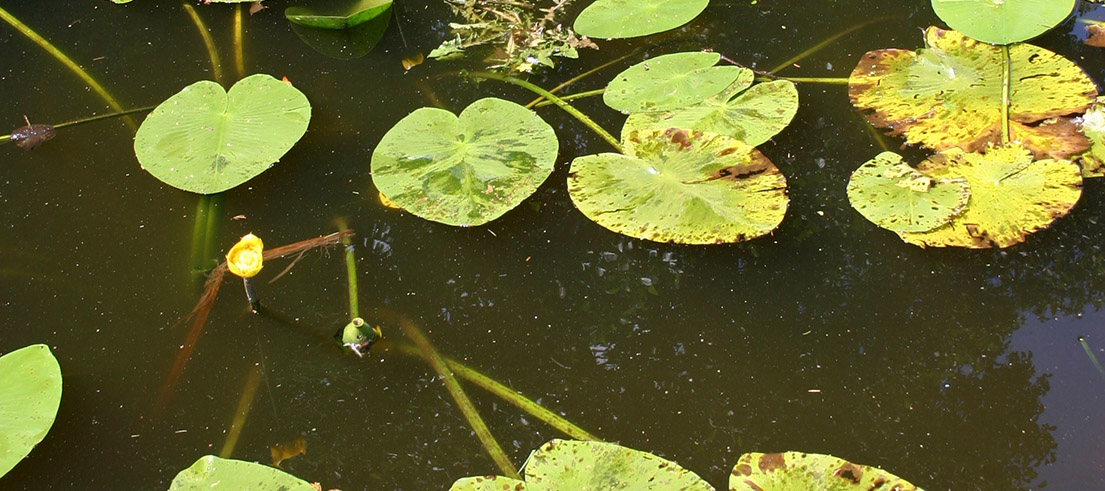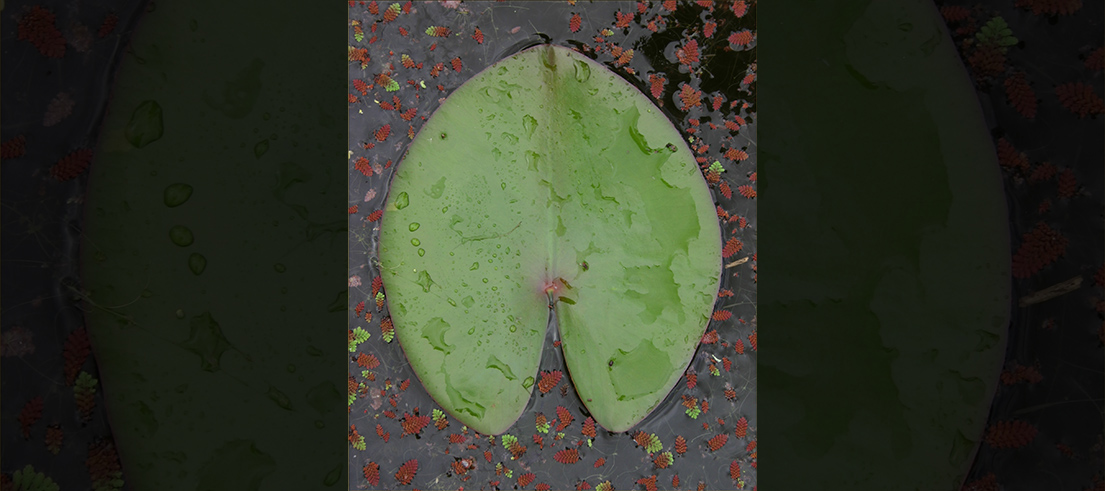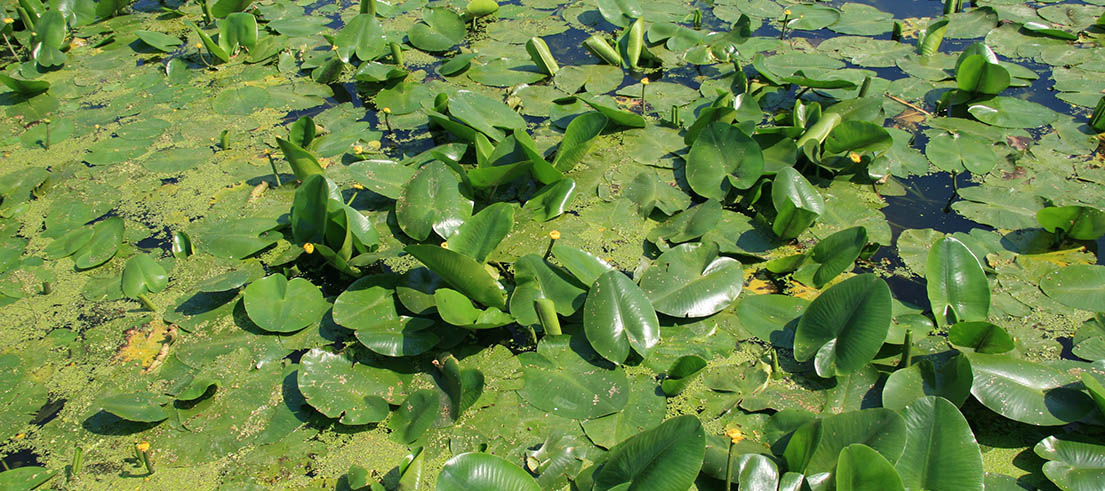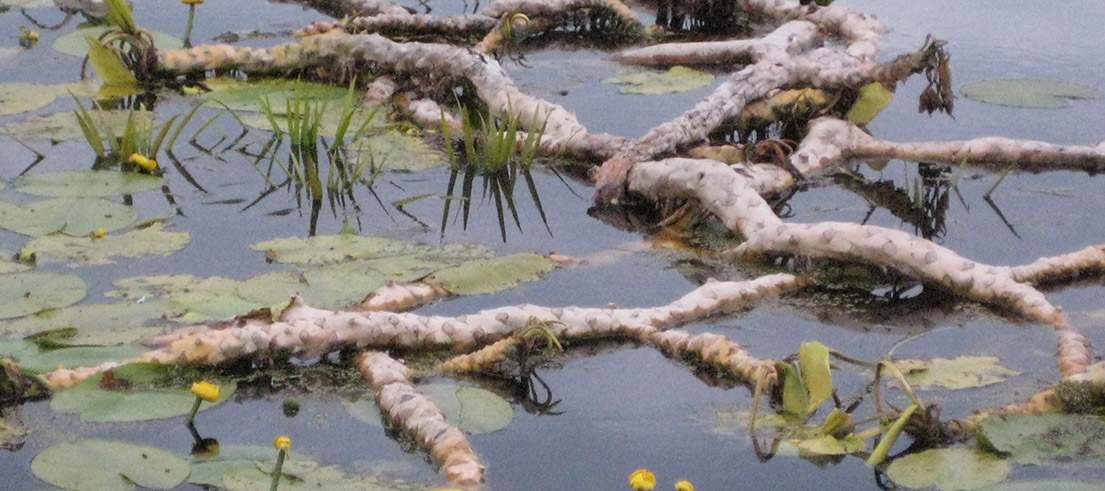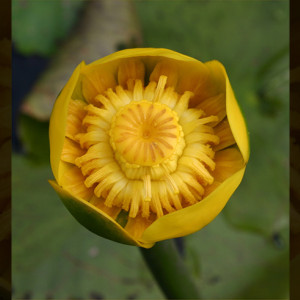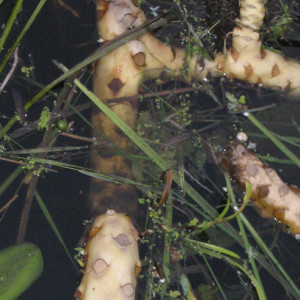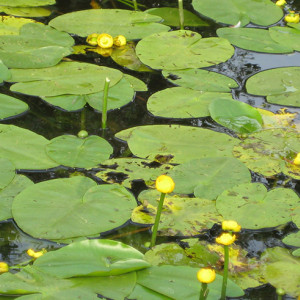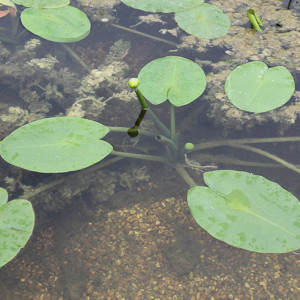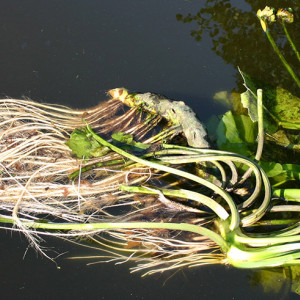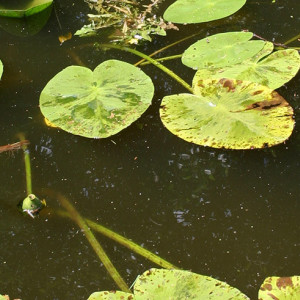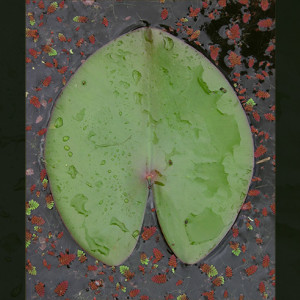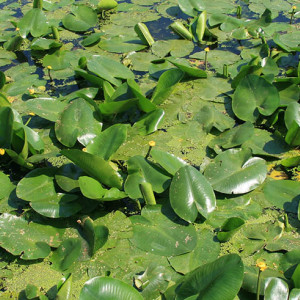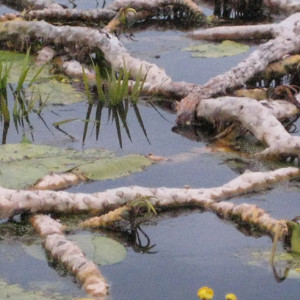Yellow water lily is a perennial aquatic bottom-rooted herb, with large, stout rhizomes. It suppresses submerged aquatic vegetation and can reduce dissolved oxygen levels.
Description
- Leaves are ovate and less than 30cm long when floating on the water’s surface.
- Flowers have a strong alcohol smell and are yellow, less than 6cm in diameter.
- Fruit is green and ripens from summer to autumn.
- Its seeds are dispersed by water. Vegetative spread from rhizome fragments, dispersed by water.
- Human-mediated dispersal through the movement of contaminated equipment and deliberate plantings.
- Habitats include still or slow-moving water bodies no deeper than 2m.
What you need to know
Forms dense mats, suppressing submerged aquatic vegetation. Can alter faunal habitat structure and patterns of nutrient storage in sediment. May reduce dissolved oxygen levels.
Management approach
This is a declared pest managed under the Canterbury Regional Management Plan 2018 – 2038 (PDF file, 10.6MB) within the eradication programme.
Eradication
Pests in the eradication programme are present in low numbers or have limited distribution within Waitaha/Canterbury and eradication is feasible.
The community should make us aware of any yellow water lily plants in Waitaha/Canterbury. We will work with affected landowners to undertake control of yellow water lily.
Yellow water lily is also an unwanted organism regulated under the National Plant Pest Accord.
Rules
Any species declared a pest cannot be sold or be in a place where plants are being sold. Pest plants cannot be propagated, bred, multiplied, communicated, released, caused to be released, or otherwise spread.
Control
Do not attempt to undertake control of yellow water lily yourself. Report any sightings to us.

